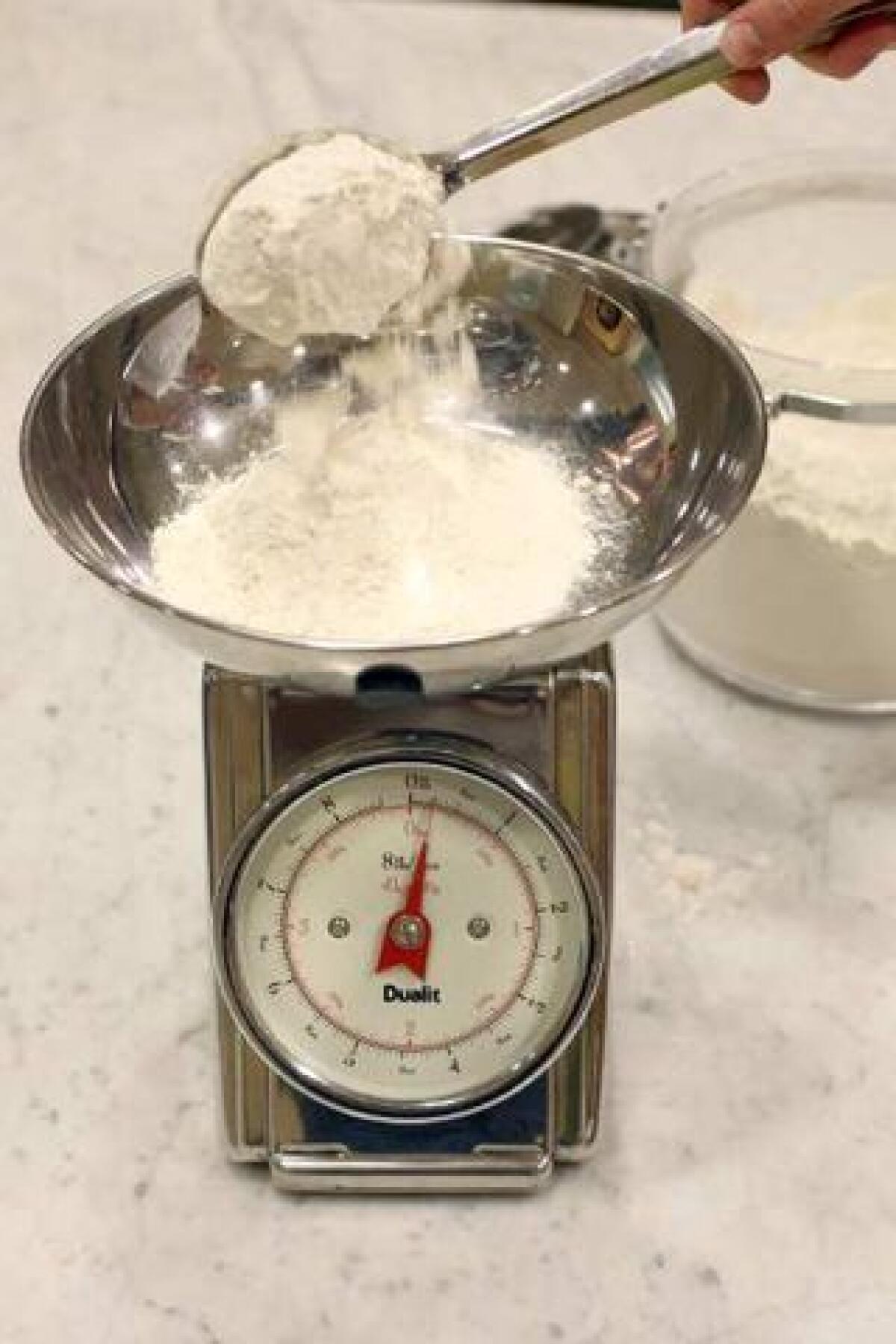Test Kitchen tips: Measuring by weight

- Share via
Measuring accurately can make or break a recipe, especially when it comes to baking.
When you need to rely on precise measurements, nothing beats a scale. Especially when it comes to flour.
Flour amounts can vary dramatically by volume depending on how you measure each cup: whether you scoop and level, lightly spoon, or sift it into the dry measure.
Even using the same method, weight can vary from cup to cup. Three years ago, we ran an experiment in the Test Kitchen in which everyone measured a cup of flour by lightly spooning it into the dry measure. Each person came up with a different weight, the results varying from 3 1/2 ounces per cup to over 5 ounces per cup.
Ever since then, we always measure flour by weight in the Test Kitchen, to ensure consistency when testing recipes. We will then convert those weight measurements to volume measurements for readers who don’t have a scale.
If you don’t have a scale, I can’t stress how helpful it can be in the kitchen. Kitchen scales are readily available at cooking supply stores, as well as the kitchen sections of many home stores and online, for as little as $15.
For additional tips on measuring and ingredients, continue reading below.
If you have any kitchen tips or questions you’d like me to explore, leave a comment below or shoot me an email at [email protected].
ALSO:
Go behind the scenes at the Test Kitchen
134 recipes for your favorite restaurant dishes
Browse hundreds of recipes from the L.A. Times Test Kitchen
You can find Noelle Carter on Facebook, Google+, Twitter and Pinterest. Email Noelle at [email protected].
- Use liquid measuring cups for liquid ingredients, and dry measures for dry ingredients. Honestly, we can’t stress how important this is; nothing will throw a recipe off more quickly than measuring out your flour in a liquid measuring cup (you’ll end up with much more than is called for in the recipe). Measuring spoons can be used for liquid and dry ingredients.
- Place the measuring cup on a flat, level surface before measuring. This goes for liquid and dry ingredients.
- Level off your dry ingredients so they’re flush with the top of the measuring spoon or cup. Do this gently.
- Gently spoon -- don’t pack -- the flour into the measuring cup. Packing will throw off a recipe by adding more flour than is called for. And don’t scoop the flour using the same spoon/cup with which you’re planning to measure -- this will pack the flour.
- Pack brown sugar into your measuring spoon or cup. Yes, this is the total opposite of the flour.
- Opened spice and herb jars should be kept no longer than one year. Spices, like anything else, get stale and lose their potency gradually after they’re opened. In the Test Kitchen, we try to date the jars once they’re opened so we know when each spice should be replaced.
- Baking soda and powder should be replaced each year. Like the spices, they lose their potency. Quick breads and cookies won’t rise (or rise as they should) with stale ingredients.
- Eggs should be at room temperature before they’re used in a recipe. One function of eggs in baking is to add volume; room-temperature eggs will give you higher cakes and more magnificent meringues than cold eggs.
- When we call for salt in a recipe, we are referring to fine salt (we use fine sea salt in the Test Kitchen). If a recipe calls for a specific salt, such as kosher or coarse, we will list this in the ingredients.
More to Read
Eat your way across L.A.
Get our weekly Tasting Notes newsletter for reviews, news and more.
You may occasionally receive promotional content from the Los Angeles Times.










